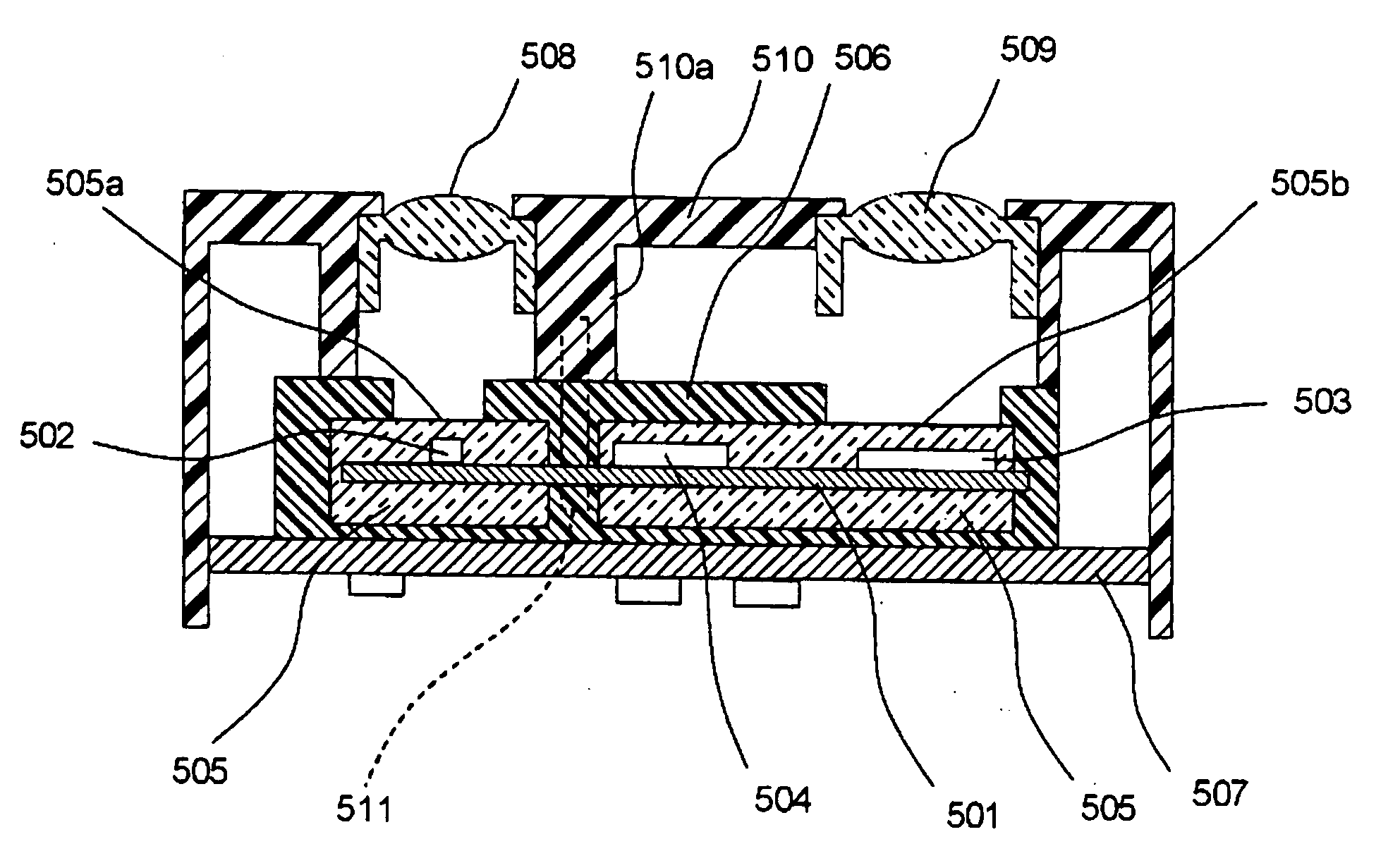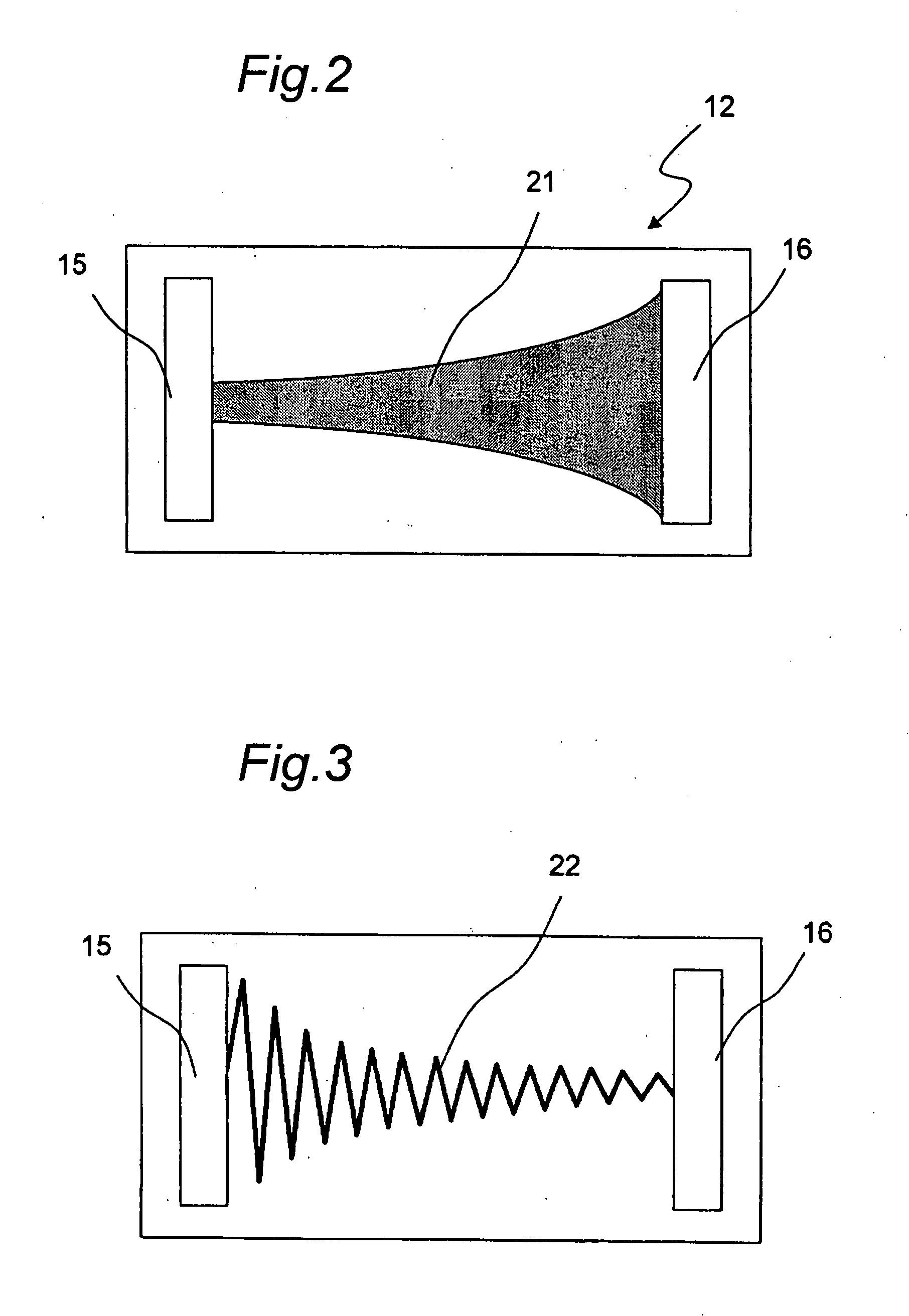Optical ranging sensor and warm water wash toilet seat
a technology of optical ranging and ranging sensors, applied in wave based measurement systems, instruments, and reradiation, etc., can solve the problems of reducing the ranging accuracy, unable to utilize the entire ranging zone, and reducing the quantity of changes of output signals sb>1/b>, so as to achieve accurate obtaining an output signal and simple construction
- Summary
- Abstract
- Description
- Claims
- Application Information
AI Technical Summary
Benefits of technology
Problems solved by technology
Method used
Image
Examples
first embodiment
[0093]FIG. 1 is a schematic view showing the basic construction of an optical ranging sensor according to the first embodiment of the present invention.
[0094]As shown in FIG. 1, the optical ranging sensor 10 of the first embodiment includes a light emitting device 11 that emits light, a light projecting condenser means 13 that condenses light emitted from the light emitting device 11 and applies the light to an object to be ranged, a light receiving condenser means 14 that condenses the reflected light from the object to be ranged (not shown), and a light receiving device 12 that is arranged so that the light receiving surface becomes perpendicular to the optical axis of the light emitted from the light emitting device 11 and receives the reflected light condensed by the light receiving condenser means 14.
[0095]The light emitting device 11 is a light source of a light emitting diode or the like, and the light emitted from the light emitting device 11 is focused by the light projecti...
second embodiment
[0118]FIG. 3 shows the light receiving surface of a PSD used as a light receiving device of an optical ranging sensor according to the second embodiment of the present invention. It is noted that the optical ranging sensor of the second embodiment has the same construction as that of the optical ranging sensor of the first embodiment except for the PSD, and reference should be made to FIG. 1 with no additional description provided therefor.
[0119]As shown in FIG. 3, in the PSD of the optical ranging sensor of the second embodiment, a resistive region 22 is formed of a p− layer in the form of a zigzag bent line. The resistive region 22 is designed so that the resistance value thereof between the first and second electrodes 15, 16 is inversely proportional to the distance from the optical axis of the light receiving condenser means 14 by making the line width and the return pitch interval of the bent line constant and changing the stroke length.
[0120]Because the resistance value of the...
third embodiment
[0121]FIG. 4 shows the light receiving surface of a PSD used as a light receiving device of an optical ranging sensor according to the third embodiment of the present invention. The optical ranging sensor of the third embodiment has a construction identical to that of the optical ranging sensor of the first embodiment except for the PSD, and reference should be made to FIG. 1 with no additional description provided therefor.
[0122]As shown in FIG. 4, in the PSD of the optical ranging sensor of the third embodiment, a resistive region 23 is formed of a p− layer in the form of a zigzag bent line. The resistive region 23 is set so that the resistance value thereof between the first and second electrodes 15, 16 is inversely proportional to the distance from the optical axis of the light receiving condenser means 14 by making the line width and the stroke length of the bent line constant and changing the return pitch interval.
[0123]In the PSD of the optical ranging sensor, a light spot sh...
PUM
| Property | Measurement | Unit |
|---|---|---|
| electric charge | aaaaa | aaaaa |
| resistance | aaaaa | aaaaa |
| stroke length | aaaaa | aaaaa |
Abstract
Description
Claims
Application Information
 Login to View More
Login to View More - R&D
- Intellectual Property
- Life Sciences
- Materials
- Tech Scout
- Unparalleled Data Quality
- Higher Quality Content
- 60% Fewer Hallucinations
Browse by: Latest US Patents, China's latest patents, Technical Efficacy Thesaurus, Application Domain, Technology Topic, Popular Technical Reports.
© 2025 PatSnap. All rights reserved.Legal|Privacy policy|Modern Slavery Act Transparency Statement|Sitemap|About US| Contact US: help@patsnap.com



